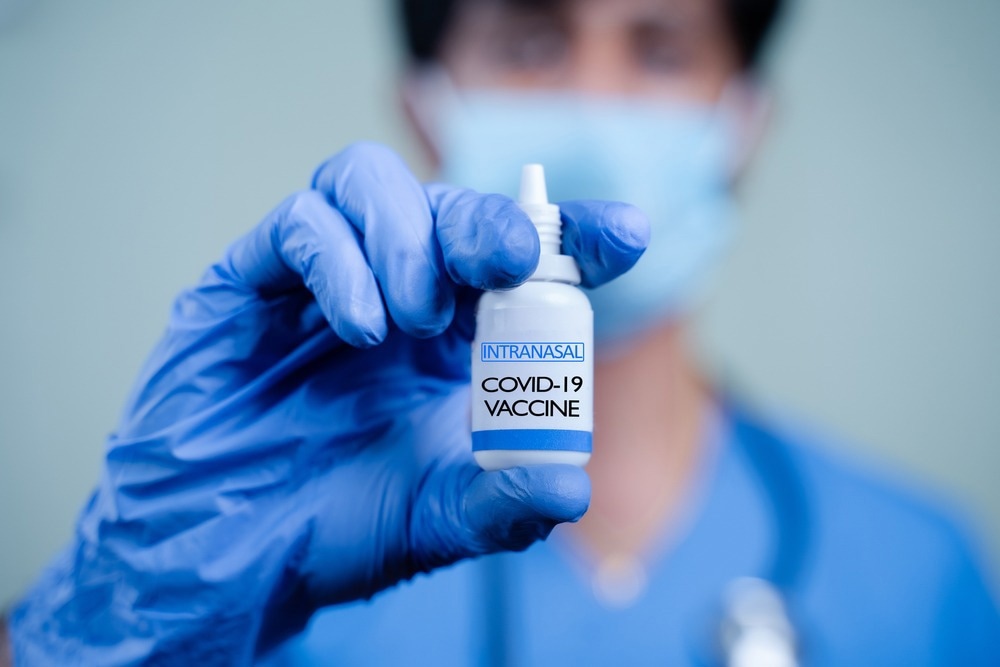In a recent review published in PLoS Pathogens, researchers opined on the use of live-attenuated whole virus vaccines (LAV) as coronavirus disease 2019 (COVID-19) vaccines.
 Study: Can live-attenuated SARS-CoV-2 vaccine contribute to stopping the pandemic? Image Credit: WESTOCK PRODUCTIONS/Shutterstock
Study: Can live-attenuated SARS-CoV-2 vaccine contribute to stopping the pandemic? Image Credit: WESTOCK PRODUCTIONS/Shutterstock
Background
The COVID-19 pandemic has caused significant mortality and morbidity across the globe, warranting the development of effective therapeutic vaccines and drugs to curtail severe acute respiratory syndrome coronavirus 2 (SARS-CoV-2) transmission. Several COVID-19 vaccines are being administered and have demonstrated anti-SARS-CoV-2 efficacy; however, the continual emergence of SARS-CoV-2 variants of concern (VOCs) has threatened vaccine efficacy.
Current vaccines are based on rapid vaccine platforms such as messenger ribonucleic acid (mRNA), adenovirus vectors, deoxyribonucleic acid (DNA) vectors, and inactivated and protein subunit vaccines. In the face of rapidly emerging VOCs, vaccine platforms with long development durations and pathways have been largely overlooked.
Novel vaccines are required to induce long-term and broader immune protection against current SARS-CoV-2 VOCs and those yet to emerge. An intranasal (i.n.) single-dose LAV vaccine is being developed by Codagenix and Serum Institute of India and has finished Phase I clinical trials with promising immunogenicity and safety.
In the present work, researchers reviewed LAV vaccines and their efficacy against SARS-CoV-2.
Applications and immunogenicity of LAV vaccines
Most of the vaccines authorized to prevent viral infections are LAV vaccines. They have been used for decades to provide long-term immunity against several viruses, such as the herpes zoster virus (HZV), poliovirus, and yellow fever virus. Smallpox vaccines have been effective and are based on the vaccinia virus, a LAV virus related closely to the variola virus. Other LAVs used routinely include mumps, measles, rubella, rotavirus, and chickenpox.
Current COVID-19 vaccines (such as BNT162b2) are administered intramuscularly (i.m.), wherein the site of injection is distant from the infection site. As a result, strong immunoglobulin G (IgG) responses and robust systemic immunity is generated, but poor mucosal immunity. In addition, the i.m. injections do not generate tissue-resident B and T lymphocytes, and high viral shedding can occur post-vaccination, causing breakthrough SARS-CoV-2 infections. Moreover, vaccination-induced immune responses are not as potent as those induced by natural infections and wane rapidly.
In contrast, LAV vaccines are administered intranasally at the site of SARS-CoV-2 entry and generate strong IgG and IgA titers with potent systemic and localized (mucosal) immunity. Additionally, strong tissue-resident lymphocytes (memory B lymphocytes and T lymphocytes) are generated by the i.n. route, with low viral shedding, reducing the risk of breakthrough infections.
Importantly, LAVs mimic natural infections and result in robust and durable immunity, comparable to that induced by natural infections. Further, the i.n. route is potentially faster, simpler, and more cost-effective than the currently administered vaccines and, therefore, highly desirable for widespread and swift global vaccination coverage. Additionally, LAV vaccines can be administered by the subcutaneous (s.c.) route, a delivery route that effectively induces systemic immune responses and could broadly and comprehensively boost immunity post-primary vaccination.
LAV vaccine efficacy against SARS-CoV-2
Vaccines directing immune responses against only one SARS-CoV-2 structural protein, usually the spike (S) protein induce narrower responses than vaccines inducing immunity against the live virus. Therefore, emerging S variants may readily escape the targeted vaccine-induced immune responses since they don’t include additional SARS-CoV-2 epitopes and may not induce broad and cross-reactive immunity against the continually emerging SARS-CoV-2 variants. Therefore, current vaccines may require to be constantly updated and modified based on SARS-CoV-2 evolution.
LAV vaccines induce broad and cross-reactive immune responses by inducing T lymphocyte and B lymphocyte epitopes for all SARS-CoV-2 proteins, are effective against conserved regions in SARS-CoV-2, and the LAV vaccine efficacy has a lower likelihood of being impacted by viral alterations. Particularly, LAV vaccines induce robust CD8+ (cluster of differentiation 8+) T lymphocyte responses and may generate strong tissue-resident memory T lymphocytes (TRM).
Conclusions
To conclude, based on the review findings, Immune responses against SARS-CoV-2 can be induced by natural infections or vaccinations. While currently used SARS-CoV-2 S-targeted and intramuscularly administered mRNA COVID-19 vaccines are effective against the virus, less efficacy has been demonstrated against the highly immune-evasive and transmissible Omicron variant. Further, mRNA vaccination-induced immunity has been reported to be lower than that induced by natural infections and wane quickly.
In contrast, entire virus-targeted and intranasally administered LAV vaccines can confer broad, cross-protective, and long-term immunity against SARS-CoV-2 and is less likely to be affected by emerging SARS-CoV-2 variants. LAV vaccines could induce localized and systemic immune responses and, therefore, could effectively boost immunity conferred by primary vaccinations; however, LAV vaccines are not recommended for immunocompromised individuals.